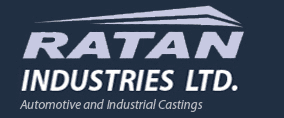The energy, carbon footprint, and cost of a ZLD plant can be calculated based on the input parameters. There are many factors to consider when choosing a ZLD scheme, including the size of the facility, the composition of input and output streams, and the amount of product water it produces. This article discusses how to design a ZLD plant to maximize its efficiency and minimize its carbon footprint.
Depending on the location of your home, you might have to purchase an STP to handle your sewage. Generally, residential buildings need at least one STP to treat sewage. Many STPs are located underground, making them difficult to maintain. Moreover, you may not be able to inspect them without hiring an expert. It is better to consult a professional if you have any doubts about the process.
Costs of ZLD plants
Initially, the cost of a ZLD plant in the textile industry was high and was a barrier to the adoption of the technology. Then, the concept of ZLD was introduced in Tirupur. It was based on the TNPCB directives and a judge-made law in the country and gradually spread to other areas. Today, the cost of a ZLD plant in the textile industry is very low.
The technology has evolved over the past few decades to become the most efficient wastewater treatment method. The USAID-funded Arvind Mill in India was one of the first to use ZLD. Its innovative pollution treatment system made wastewater treatment simpler and more efficient than ever. In fact, the facility was able to recycle its wastewater and recover the salts it lost in the dyeing process. This wastewater treatment method is cost-effective and can save a large amount of water in textile industries.
The carbon footprint of ZLD plants

The carbon footprint of ZLD plants is a key issue in the textile sector. In India, most textile units are small to medium-sized. In addition to requiring more space and land for a ZLD plant, the maintenance costs of ZLD systems are also high. This reduces the commercial viability of ZLD in textile units. Moreover, the ZLD system is complex and requires skilled manpower to operate, which increases the overall cost of the treatment.

The carbon footprint of ZLD plants is 1.36 times greater than that of conventional wastewater treatment plants. In addition, ZLD plants produce a large quantity of hazardous solid waste that poses challenges to disposal. Depending on state environmental regulations, this waste can be recycled as fill material or disposed of in a landfill. However, this process requires enormous energy, which is not an option in many textile industries.
Energy consumption of ZLD plants
The energy consumption of ZLD plants in textile industries is substantial. These plants emit large amounts of greenhouse gases as a result of pretreatment processes. Some pretreatment methods emit carbon dioxide into the atmosphere, while others increase CO2 emissions through decarbonisation for scaling control. According to the U.S. Energy Information Administration, ZLD plants produce a total of 1.6 million tons of CO2 annually. This amount is expected to rise as more textile manufacturers develop ZLD processes.
The energy consumption of ZLD plants in textile industries can be significantly reduced by reverse osmosis. This process eliminates dissolved solids and allows for water reuse in textile manufacturing. The permeate stream from a ZLD plant is used by textile industries as process water. The reject stream is sent to a multiple effect evaporator (MEE) and Agitated Thin Film Dryer (ATFD). Textile mills can use the water recovered in the ATFD unit as boiler feed. During the drying process, the colored powder is removed from the wastewater. As a result, the colored powder is classified as hazardous solid waste.
The efficiency of ZLD plants
The primary goal of a ZLD wastewater treatment plant is to minimize or avoid the discharge of effluent into a water body. Recycling effluent from textile manufacturers, this technology helps to preserve water resources. Textile manufacturers should consider energy consumption, environmental impacts, and pollution potential before implementing a ZLD system. For instance, some pretreatment methods release CO2 into the atmosphere. Other methods, such as decarbonisation for scaling control, increase CO2 emissions. In addition, ED in pretreatment processes may increase emissions through energy consumption. For example, the U.S. Energy Information Administration reports CO2 emissions by fuel type.
While the main objective of ZLD is to reduce water consumption and improve water sustainability, the practice can lead to unintended environmental impacts. The resulting solid wastes may contain harmful chemicals and pose a threat to wildlife. Furthermore, when solid wastes are stored in evaporation ponds, they can leak, causing contamination of the water. To prevent these environmental risks, ZLD plants must incorporate impervious liners and reliable monitoring systems.
Source segregation of effluent streams
Source segregation is separating the dissolved compounds in an effluent stream into salts and other solid materials. Previously, textile effluent was discharged at various locations and into natural water bodies. This conventional treatment method did not remove dissolved solids and thus had adverse effects on receiving agricultural lands. However, recent developments in wastewater treatment technology have made source segregation possible in textile industries.
Since its introduction, ZLD has gained importance in the textile industry. In 2015, several policy reforms were taken to encourage the implementation of this innovative method. Tirupur has implemented this technique for a while, but the newer, more advanced ZLD methods are now being considered in many textile companies worldwide. The Tirupur facility was consulted by authorities in several dominant textile countries and hosted a delegation of international experts. These experts visited countries wishing to install advanced treatment systems and demonstrated the Tirupur plant configuration.







































Share Post